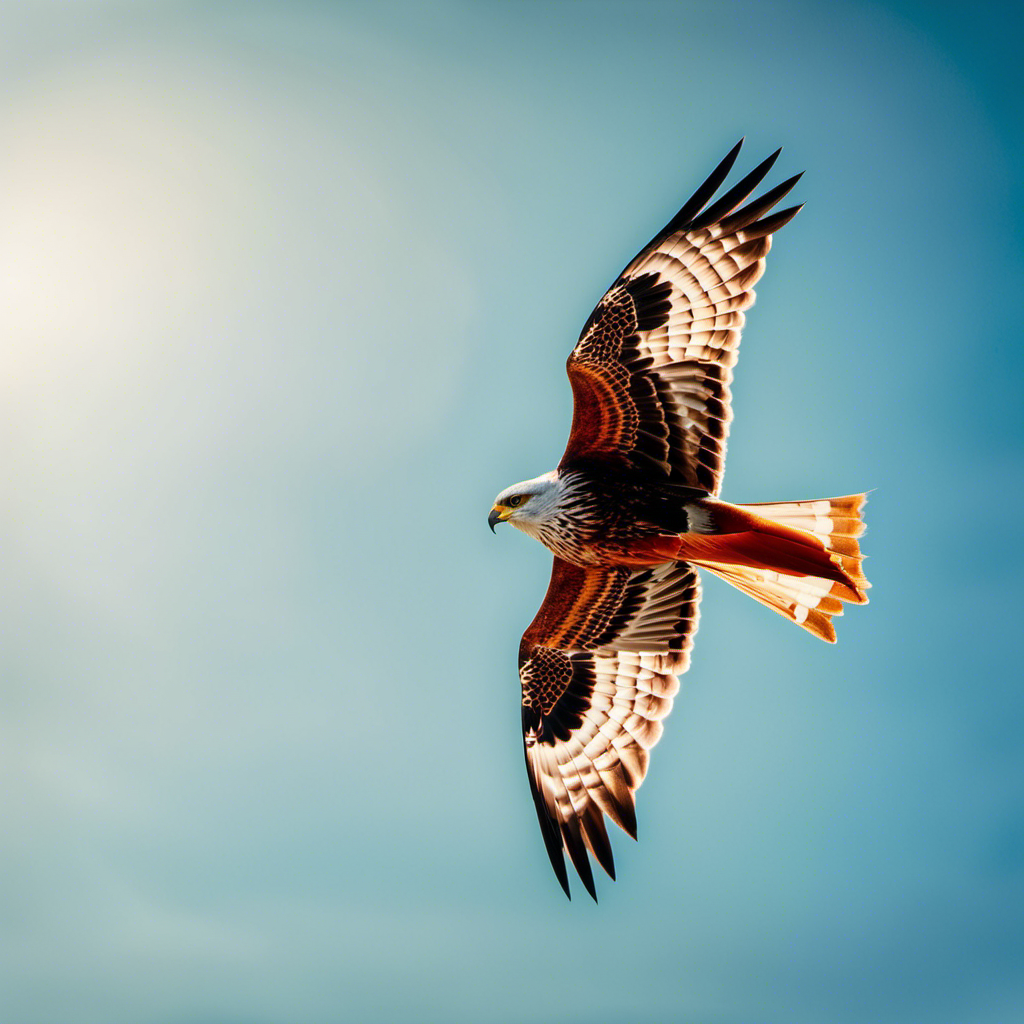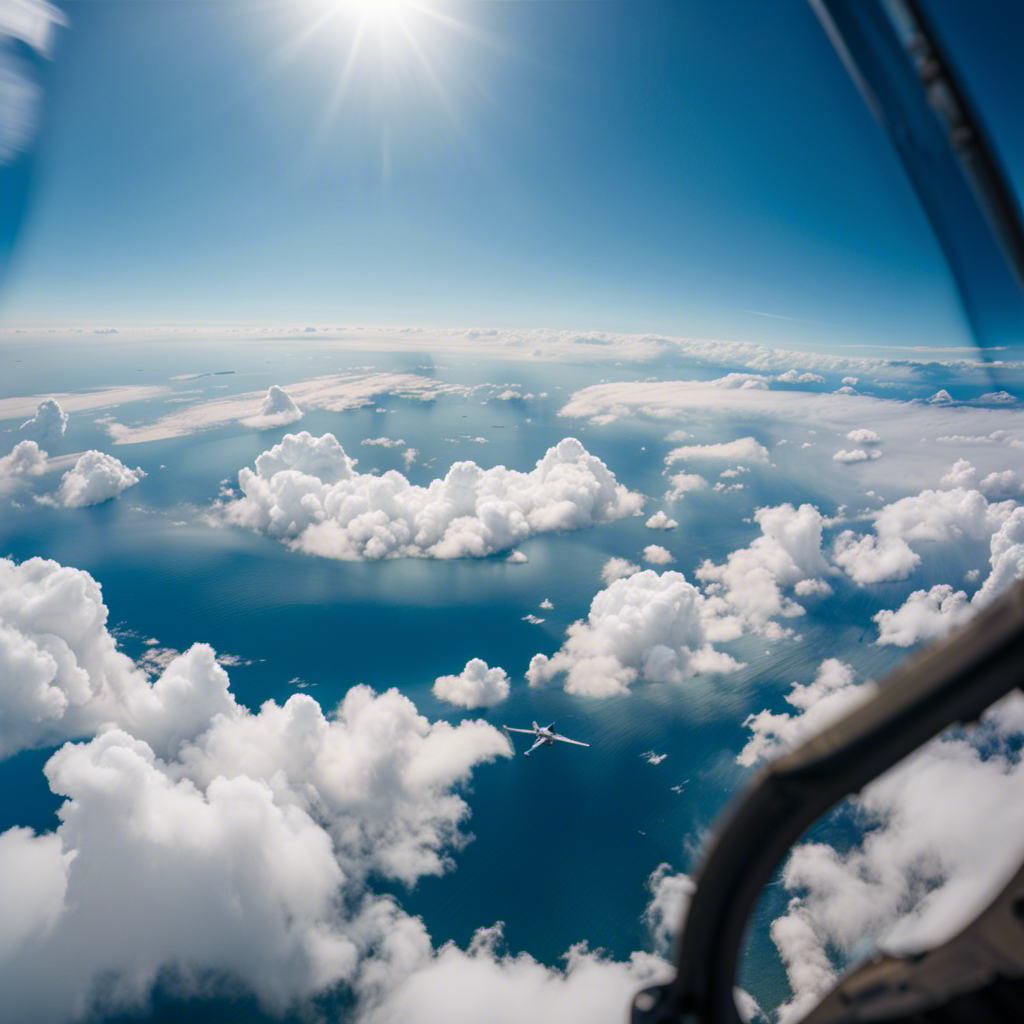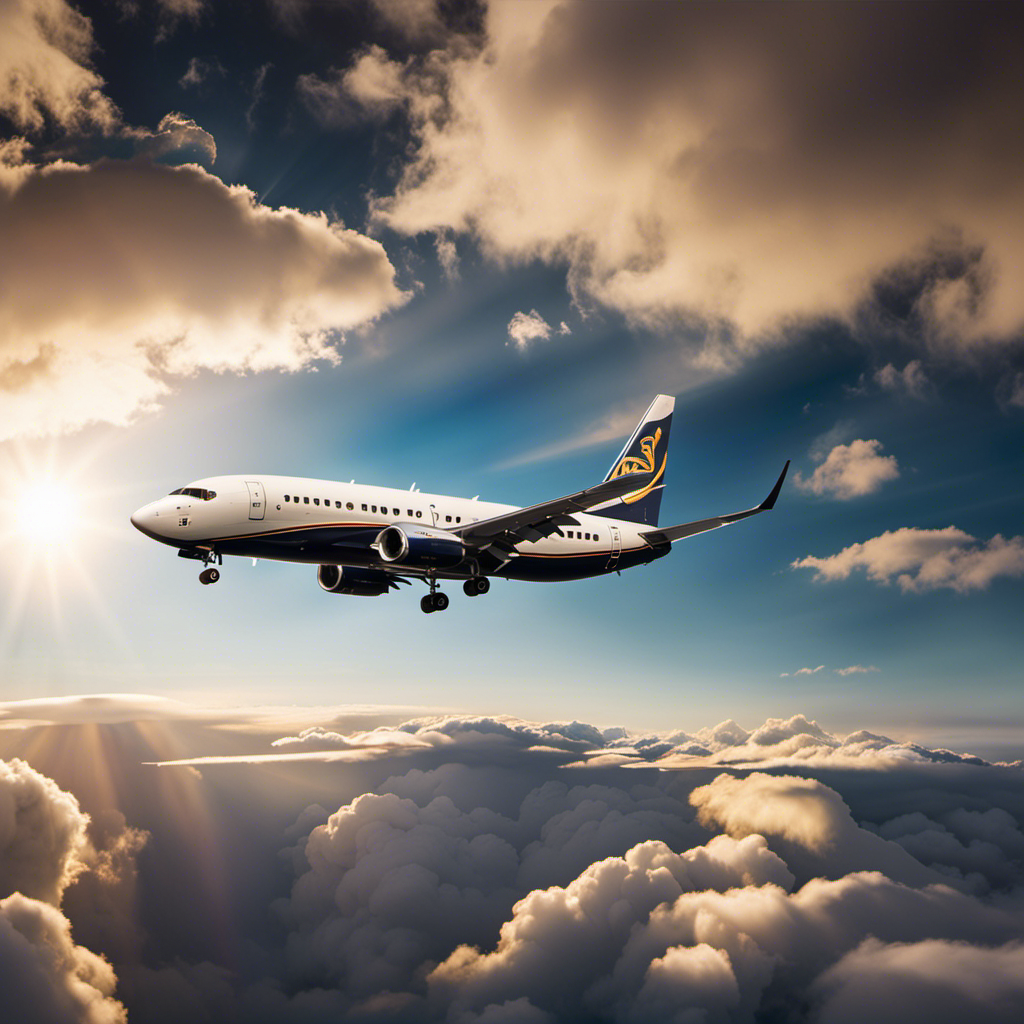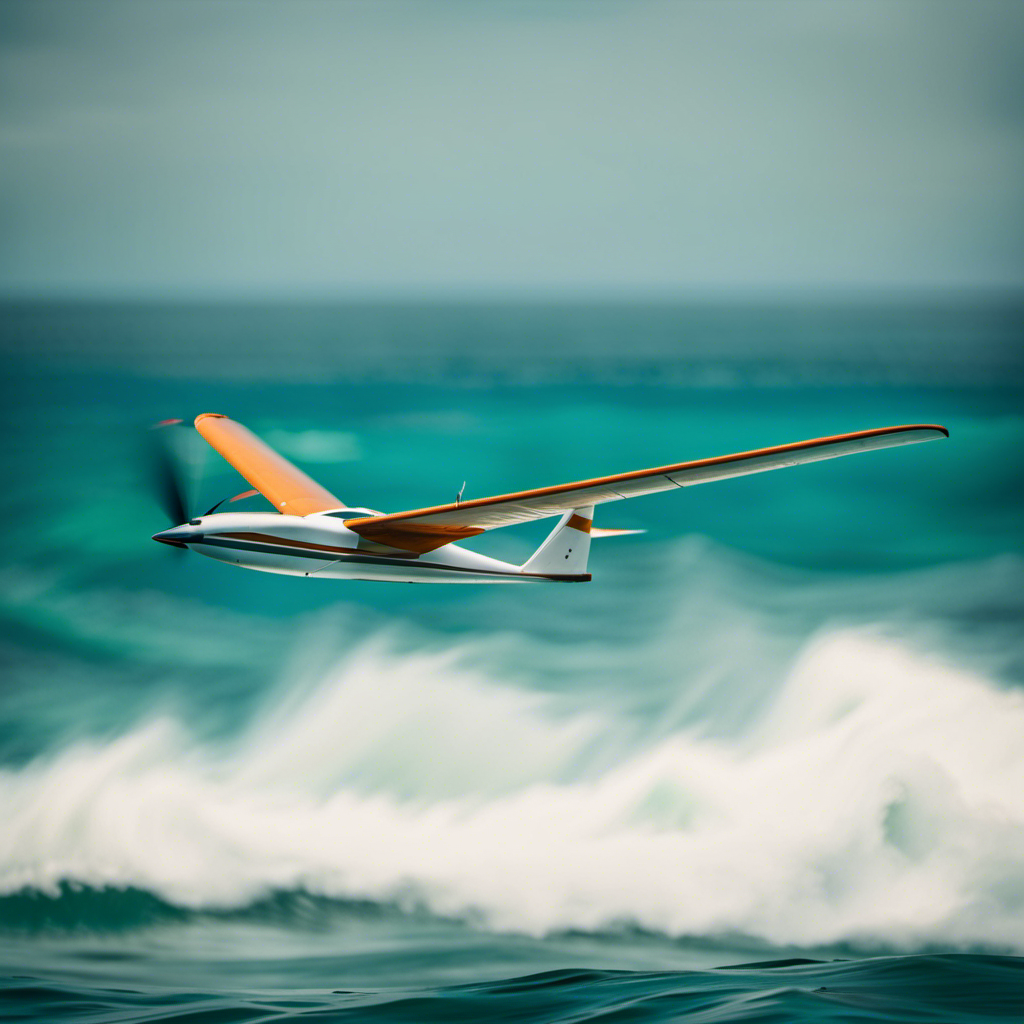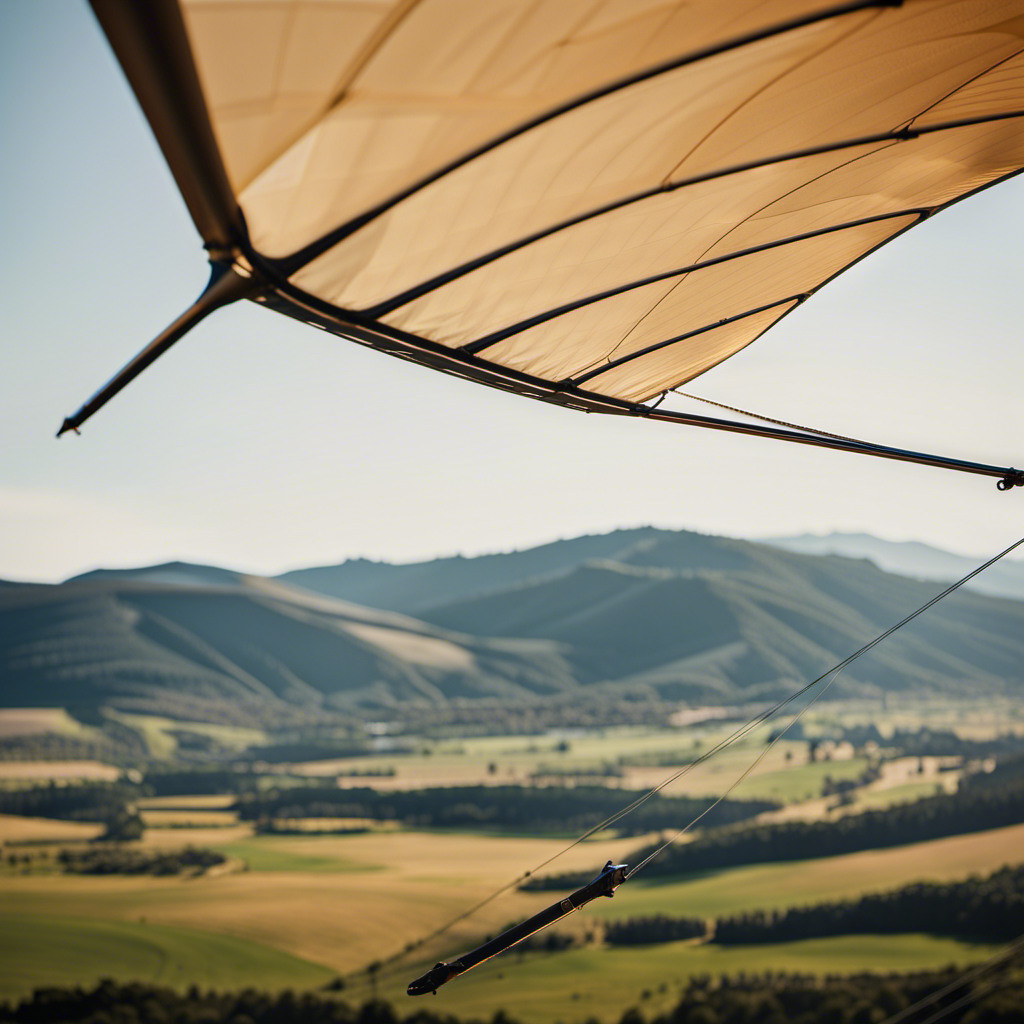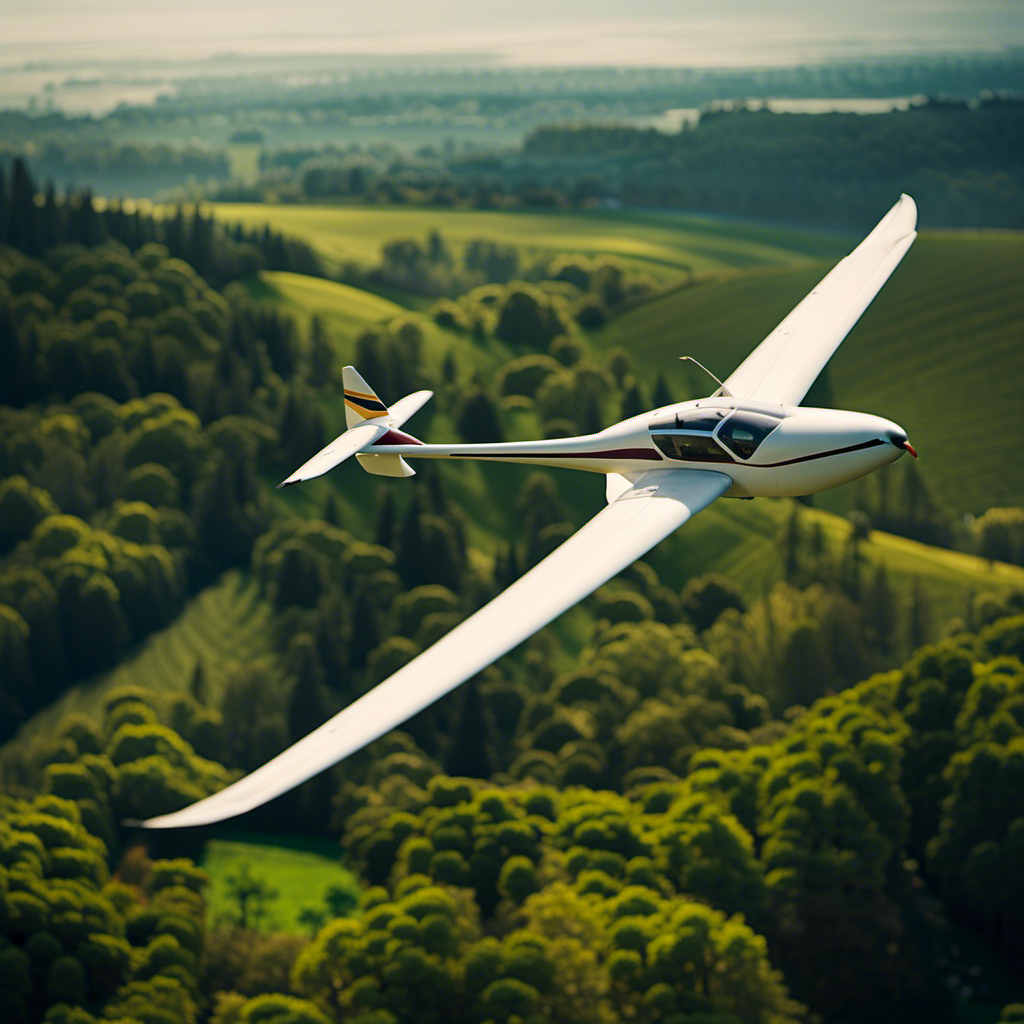Can I actually sail through the wind?
The answer to this question lies in understanding the mechanics of gliding and how air currents play a crucial role.
Gliding, a fascinating mode of transportation, relies on the concept of lift to soar through the sky.
In this article, we will explore the basics of gliding, the different types of gliders, and the techniques and equipment used by humans.
Join me as we delve into the world of gliding and discover the environmental benefits it offers.
Key Takeaways
- Gliding relies on wind currents for flight.
- Understanding aerodynamics is essential for successful gliding.
- Different wind patterns and air temperature affect gliding performance.
- Utilizing air currents optimizes gliding performance.
Introduction to Gliding and its Mechanics
Gliding is a form of flight where an aircraft maintains its altitude by using wind currents. To understand the principles of glider flight, it is crucial to have a solid understanding of aerodynamics. The key to gliding is harnessing the forces acting on the aircraft, specifically lift and drag.
Lift is generated by the wings as they interact with the airflow, while drag opposes the forward motion. By carefully managing these forces, a glider can stay airborne for extended periods. The shape of the wings, known as the airfoil, plays a crucial role in generating lift and reducing drag.
Additionally, the pilot must make precise adjustments to control the glider’s pitch, roll, and yaw. Now, let’s delve into the next section, understanding the basics of air currents, to further enhance our knowledge of gliding.
Understanding the Basics of Air Currents
Feeling the wind’s force against your body helps you understand the basics of air currents. It’s fascinating how wind patterns can affect gliding performance. Here are three key points to pique your interest:
-
Wind patterns: Understanding how air moves and flows is crucial for gliding. Different wind directions and speeds can impact the glide path and make it easier or more challenging for a glider to maintain altitude.
-
Effects of air temperature: Air temperature plays a significant role in gliding performance. Warmer air tends to rise, creating thermal updrafts that gliders can use to gain altitude. Conversely, cooler air can result in downdrafts, making it harder to stay aloft.
-
Adaptation and strategy: Glider pilots must adapt to changing wind patterns and utilize their knowledge of air currents to optimize their performance. By anticipating and adjusting to these factors, they can maximize their glide distance and duration.
Understanding the basics of air currents sets the stage for comprehending the role of lift in gliding, which we will explore next.
The Role of Lift in Gliding
Exploring the role of lift in gliding can enhance your understanding of the forces at play during flight. Lift is the upward force that counteracts the role of gravity in gliding. It is generated by the shape of the wings and the movement of air over them. To illustrate this concept, let’s take a look at the table below, which outlines the factors that affect lift during gliding:
| Factor | Description | Effect on Lift |
|---|---|---|
| Wing shape | Curved shape creates pressure | Increases |
| Angle of attack | Higher angle increases lift | Increases |
| Airspeed | Faster speed generates more lift | Increases |
Understanding the role of lift in gliding is crucial because it allows the pilot to control the aircraft’s altitude and maintain flight. Additionally, the importance of air density cannot be overlooked. As air density increases, more lift is generated, making it easier to glide. This information sets the foundation for the subsequent section, where we will delve into the types of gliders and their design features.
Types of Gliders and their Design Features
Take a moment to consider the various types of gliders and how their design features impact their performance in flight. Glider design has evolved over the years, with advancements in aerodynamics playing a crucial role.
Here are five key design features that greatly influence a glider’s performance:
- Wing shape: The shape of the wings affects lift and drag, with sleek, tapered wings offering better performance.
- Aspect ratio: Higher aspect ratio wings provide better lift-to-drag ratio, allowing for longer gliding distances.
- Control surfaces: Ailerons, elevators, and rudders allow for precise control and maneuverability during flight.
- Fuselage design: Streamlined fuselages minimize drag and improve the glider’s overall efficiency.
- Materials: Lightweight materials, such as carbon fiber, are used to reduce weight and enhance performance.
These design features have allowed gliders to become more efficient and capable of longer flights.
Transitioning into the subsequent section about human gliding techniques and equipment, it is important to understand how these design features work in tandem with the skills and tools used by gliders.
Human Gliding Techniques and Equipment
Using proper technique and equipment, pilots can achieve longer and more controlled glides.
Human gliding techniques involve mastering the art of weight shifting and maintaining a proper body position during flight. By shifting their weight, pilots can control the direction and speed of their glide.
Additionally, skilled pilots utilize a variety of gliding equipment and gear to enhance their performance. This includes lightweight and aerodynamic wingsuits, which allow for increased lift and maneuverability. Harnesses and parachutes are also essential for safety and control during the glide.
Understanding the principles of aerodynamics and utilizing the right equipment are key factors in achieving successful human glides.
Now, let’s explore the fascinating world of gliding in the animal kingdom, where creatures have evolved incredible adaptations for airborne locomotion.
Gliding in the Animal Kingdom
I have always been fascinated by the various ways animals navigate the skies, utilizing their unique abilities to soar, glide, and navigate.
Birds, with their remarkable soaring abilities, effortlessly ride the air currents, their wings perfectly adapted for sustained flight.
Flying squirrels, on the other hand, have evolved gliding adaptations, allowing them to gracefully glide through the forest canopy, relying on their patagium, a membrane of skin stretching between their limbs, to stay airborne.
Lastly, flying fish demonstrate incredible aerial navigation skills, propelling themselves out of the water and gliding through the air, using their modified pectoral fins to maneuver and evade predators.
Birds and their Soaring Abilities
Birds can glide effortlessly through the air due to their impressive soaring abilities. These adaptations have allowed them to thrive in different climates and environments across the world.
Imagine a majestic eagle soaring high above the mountains, its wings outstretched, catching the thermals to stay aloft. Picture a flock of seagulls gliding effortlessly over the ocean, their wings dipping and soaring with the rhythm of the waves. Envision a hummingbird hovering in mid-air, its wings beating so fast they become a blur, allowing it to maneuver with incredible precision.
This evolution of soaring abilities in birds has given them the advantage of efficient and graceful flight, enabling them to navigate vast distances and find food and shelter with ease.
Transitioning into the next section, let’s explore the fascinating world of flying squirrels and their gliding adaptations.
Flying Squirrels and their Gliding Adaptations
Imagine a flying squirrel effortlessly gliding through the forest, its skin stretched between its limbs, allowing it to seamlessly navigate from tree to tree. Flying squirrels have remarkable adaptations that enable them to glide through the air with precision and grace.
Their unique anatomy, including a patagium, a thin, furred membrane, stretches between their limbs, creating a wing-like structure. This membrane acts as a parachute, providing lift and reducing drag as they glide through the air.
To control their glide, flying squirrels have a long, bushy tail that acts as a rudder, allowing them to steer and maneuver mid-air. Additionally, their lightweight bones and muscular body help them maintain stability and agility during flight.
Now, let’s explore the fascinating world of flying fish and their remarkable aerial navigation.
Flying Fish and their Aerial Navigation
As you watch a flying fish leap out of the water and soar through the air, you can’t help but marvel at its impressive ability to navigate the skies.
Flying fish have evolved remarkable adaptations that allow them to glide above the water’s surface. Their sleek, torpedo-shaped bodies and long, wing-like pectoral fins enable them to generate lift and glide effortlessly through the air. These fins are highly specialized, acting as both wings and stabilizers during flight.
Additionally, flying fish have a streamlined body shape and a powerful tail fin that assists in propulsion and steering. Their ability to glide in marine environments is a testament to the incredible adaptability of these aquatic creatures.
Now, let’s delve into the world of gliding competitions and records, where humans strive to achieve similar feats of aerial navigation.
Gliding Competitions and Records
Gliding competitions and records have become increasingly popular among enthusiasts. To excel in these events, it is crucial to master the art of gliding techniques.
Competitors must showcase their expertise in maneuvering through complex air currents and maximizing their glide ratio. Skillful pilots employ various strategies, such as thermal soaring, ridge soaring, and wave soaring, to stay aloft and cover long distances.
Gliding competitions challenge participants to navigate designated courses, demonstrating their ability to maintain optimal speed and accuracy. Achieving record-breaking performances requires not only exceptional gliding skills but also a deep understanding of meteorological conditions and the ability to make split-second decisions.
Safety measures and precautions play a vital role in gliding, ensuring the well-being of pilots and preventing accidents. By implementing proper training, pre-flight checks, and adhering to established protocols, pilots can mitigate risks and ensure a safe gliding experience.
Safety Measures and Precautions in Gliding
Safety measures and precautions are crucial in ensuring a secure and accident-free gliding experience. Gliding is an exhilarating sport that requires strict adherence to safety regulations and emergency procedures. As a glider pilot, I understand the importance of being prepared for any unforeseen circumstances. Here is a table outlining some of the key safety measures and precautions that every glider pilot must follow:
| Safety Measure | Description | Importance |
|---|---|---|
| Pre-flight Inspection | Thoroughly inspecting the glider before each flight | Ensures aircraft readiness |
| Radio Communication | Regularly communicating with air traffic control | Maintains situational awareness |
| Emergency Procedures | Quickly responding to emergencies and following protocols | Minimizes risks and accidents |
| Weather Monitoring | Continuously monitoring weather conditions | Avoids unfavorable conditions |
| Proper Equipment | Using appropriate safety equipment and gear | Enhances personal protection |
Training and Certification for Glider Pilots
To become a certified glider pilot, it is essential to undergo comprehensive training that covers various aspects of flying and emergency procedures. The training techniques used focus on developing the necessary skills and knowledge to safely operate a glider.
These techniques include theoretical instruction on aerodynamics, meteorology, navigation, and aircraft systems. Practical training involves hands-on experience in the cockpit, where pilots learn how to takeoff, maintain altitude, and perform maneuvers.
Additionally, aspiring glider pilots must meet specific licensing requirements, which typically include a minimum number of flight hours and passing a written examination. Obtaining a glider pilot license demonstrates a pilot’s proficiency in gliding operations and ensures adherence to safety standards.
With the proper training and certification, glider pilots can become active members of gliding clubs and communities, where they can further enhance their skills and engage in recreational gliding activities.
Gliding Clubs and Communities
Joining a gliding club is a great way to connect with experienced pilots and immerse yourself in a supportive community. These clubs provide an opportunity to learn and improve gliding techniques while also fostering a sense of camaraderie among members. Additionally, gliding clubs often have access to a wide range of gliding equipment, allowing members to try out different aircraft and expand their skills.
To give you an idea of the variety of gliding equipment available, here is a table showcasing some common gliders and their specifications:
| Glider Model | Wingspan (m) | Maximum Takeoff Weight (kg) | Glide Ratio |
|---|---|---|---|
| ASK 21 | 17.4 | 615 | 40:1 |
| LS4 | 15.6 | 525 | 42:1 |
| Discus 2 | 15.6 | 570 | 45:1 |
| Ventus 2 | 18.2 | 750 | 51:1 |
Being part of a gliding club not only allows you to access top-notch gliding equipment but also provides a platform to exchange knowledge and experiences with other pilots. This shared passion for gliding creates a vibrant and supportive community. Now, let’s delve into the exciting world of gliding as a recreational activity.
Gliding as a Recreational Activity
Being part of a gliding club allows pilots to share experiences and exchange knowledge in a vibrant and supportive community. Gliding as a recreational activity offers a unique and exhilarating experience for aviation enthusiasts.
Gliding clubs play a crucial role in promoting gliding as a sport and recruiting gliding enthusiasts. These clubs organize various events and competitions to showcase the thrill and skill involved in gliding. They provide training opportunities for beginners and advanced pilots alike, ensuring the growth and development of the sport. Through these initiatives, gliding clubs aim to attract more individuals to experience the joy of soaring through the skies.
Now, let’s explore gliding as a mode of transportation, where gliders are used for practical purposes beyond recreational flying.
Gliding as a Mode of Transportation
After exploring the recreational side of gliding, let’s delve into the practical aspects of gliding as a mode of transportation. Gliding offers a unique and efficient way to travel, harnessing the power of wind currents to glide through the air. Gliders, also known as sailplanes, are designed to maximize efficiency and safety. Gliding techniques, such as adjusting the angle of attack and utilizing thermals, allow gliders to stay aloft for extended periods. Safety is of utmost importance in gliding, and pilots undergo rigorous training to ensure they are well-prepared for any situation. To further emphasize the importance of safety, let’s take a look at the following table, which highlights some key gliding safety principles:
| Gliding Safety Principles |
|---|
| Thorough pre-flight checks |
| Proper use of safety equipment |
| Constant situational awareness |
| Adherence to established procedures |
Understanding and applying these safety principles is crucial for a successful gliding experience. Now, let’s move on to explore the environmental benefits of gliding.
Environmental Benefits of Gliding
To fully appreciate the environmental benefits of gliding, take a moment to consider how harnessing wind currents can reduce carbon emissions. Gliding is a low carbon alternative for sustainable travel, with numerous benefits for the environment.
When gliding, we rely on the power of nature, utilizing wind currents to stay aloft and propel ourselves through the air. This means we don’t need to burn fossil fuels, resulting in a significant reduction in carbon emissions compared to traditional modes of transportation.
By embracing gliding as a sustainable travel option, we can contribute to preserving our planet for future generations.
Now, let’s delve into the fascinating world of gliding in extreme weather conditions.
Gliding in Extreme Weather Conditions
After exploring the environmental benefits of gliding, let’s now delve into the thrilling realm of gliding in extreme weather conditions. As a glider pilot, I have experienced the adrenaline rush of navigating through hurricanes and blizzards. Here are four remarkable aspects of gliding in such challenging conditions:
-
Unpredictability: The ever-changing nature of hurricanes and blizzards demands constant vigilance and adaptability, heightening the sense of adventure.
-
Intense sensations: Gliding through hurricane winds or snow-filled blizzards evokes a mix of awe, excitement, and trepidation, as you feel the raw power of nature.
-
Technical mastery: Maneuvering a glider in extreme weather requires exceptional piloting skills and precise decision-making, pushing the boundaries of what is possible.
-
Unforgettable memories: Gliding in hurricanes and blizzards creates memories that last a lifetime, leaving a lasting impression and a sense of accomplishment.
Transitioning into the subsequent section, let’s now turn our attention to the conclusion and future possibilities in gliding technology.
Conclusion and Future Possibilities in Gliding Technology
As a glider pilot, you’ll be excited to learn about the conclusion and future possibilities in gliding technology.
The advancements made in recent years have opened up new doors for the gliding community. With the development of more efficient wings, improved materials, and advanced navigation systems, gliders are becoming safer and more capable than ever before.
However, there are still challenges and limitations that need to be addressed. For instance, the reliance on weather conditions and the limited range of gliders are factors that restrict their usage. Additionally, the high cost of acquiring and maintaining gliding equipment can be a barrier for many enthusiasts.
Nonetheless, with ongoing research and development, the future of gliding technology looks promising. Improved aerodynamics, innovative propulsion systems, and advancements in autonomous flight are just a few areas that hold great potential for the future of gliding.
Frequently Asked Questions
Can gliders be used for long-distance travel?
Yes, gliders can be used for long-distance travel. They offer numerous advantages such as fuel efficiency, reduced operating costs, and the ability to soar in thermals. However, glider safety precautions must be strictly followed to ensure a safe journey.
What are some common injuries or accidents that can occur while gliding?
When gliding, common injuries or accidents include turbulence-related incidents, mid-air collisions, and hard landings. To stay safe, it is important to wear proper safety equipment, receive thorough training, and adhere to important safety precautions while gliding.
Are there any age restrictions for glider pilots?
There are age limits for glider pilots, with a minimum age requirement usually around 14-16 years old. Training requirements include completing a certain number of flight hours and passing written and practical exams.
How much does it cost to get certified as a glider pilot?
Becoming a certified glider pilot costs around $5,000 to $10,000, depending on the training program and location. The training duration typically ranges from 40 to 60 hours of flight time, spread over several months.
Can gliders be affected by turbulence?
Glider stability can be affected by turbulence, which can have an impact on glider performance. Wind conditions play a crucial role in determining the level of turbulence experienced, ultimately influencing the overall performance of the glider.
Conclusion
In conclusion, gliding is an exhilarating and efficient mode of transportation that harnesses the power of air currents to soar through the skies. With a deep understanding of lift and the design features of gliders, humans have perfected the art of gliding.
Not only does it provide a thrilling experience, but it also offers environmental benefits by reducing reliance on fossil fuels. As gliding technology continues to advance, the possibilities for exploration and adventure in extreme weather conditions are endless.
Gliding truly is a remarkable feat of engineering and a testament to human ingenuity.
With a heart that soars as high as the skies, Aria, affectionately known as “Skylark,” is the driving force behind Soaring Skyways. Her journey into the gliding world began as a young dreamer gazing up at the soaring birds, yearning to experience the weightlessness and freedom they embodied. With years of experience both in the cockpit and behind the scenes, Aria’s commitment to the gliding community is unwavering.
